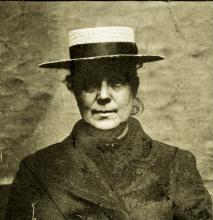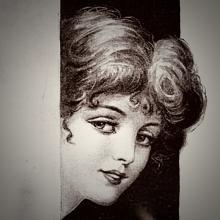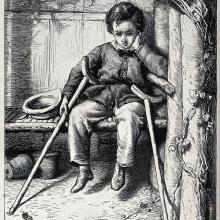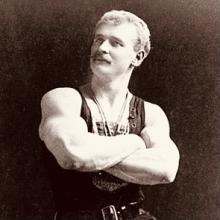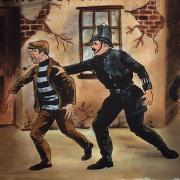
1909
EDINBURGH AMATEUR DETECTIVE’S CHASE.
CLEVER CAPTURE OF ALLEGED BURGLAR.
THE clever capture of an alleged Edinburgh housebreaker by an amateur detective came to light yesterday, when the accused, George Alexander Melrose, residing at Crown Street, Leith, passed the bar of Edinburgh City Police Court on a charge of housebreaking. Interesting circumstances surround the story of Melrose’s arrest.[1]
About ten o’clock on Thursday evening a young man, who resides in Jamaica Street, was standing at the end of Jamaica Street Lane, when be observed the suspicious movements of a strange-looking individual. Hiding as best he could, the young man watched the other, and saw him take a jemmy from the sleeve of his coat and apply it to the back door of a bootmaker’s shop in Howe Street. While this was being done, an assistant in the bootmaker’s shop passed along the street, and the watcher stopped him and told him of what was going on. He also sent the assistant for the occupier of the shop.
While the assistant was gone Melrose emerged from the shop, and as he passed the youthful detective the latter spoke in order to get a better impression of his features. The young man followed at a respectful distance, but accuser on observing himself followed, stopped and accosted the other and tipped him a handful of silver amounting to nearly £1, and told him to say nothing about it. At the conclusion of this conversation accused is said to have dropped the jemmy into a pool on the street and to have ran off. He hailed a passing cab, and drove off at a rapid pace.
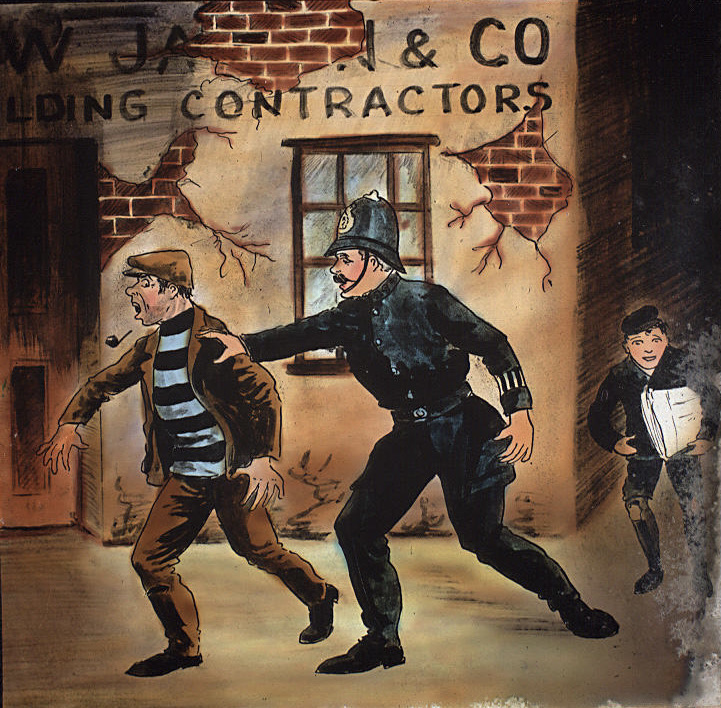
Determined not to lose his quarry, however, the young man ran after the cab, and, succeeding in overtaking it, he seated himself on the back axle. The vehicle stopped in Lothian Road, where accused dismissed the cab and hailed another, which he directed to be driven along Princes Street. The amateur detective was not to be thrown off the scent, and he immediately requisitioned another cab, directing the driver to follow the one in which accused was travelling.
Keeping the accused in sight, all the time, the young man approached a constable at the St Andrew Square crossing and informed him of the chase. The constable and the young man made up on the vehicle at East Register Street, and ordered the driver to stop. On this being done accused stepped out, and was arrested and taken into custody.
Later it was ascertained that a sum of £3 had been stolen from a lockfast cash-box in a desk in the bootmaker’s shop at 26 Howe Street.[2] Melrose appeared before the Sheriff later in the day, and emitted a declaration.
Scotsman, 20 March 1909
[1] Image: Museums Victoria, Public Domain, accessed 16.5.21.
[2] Occupied today by Sally Beauty.
*****
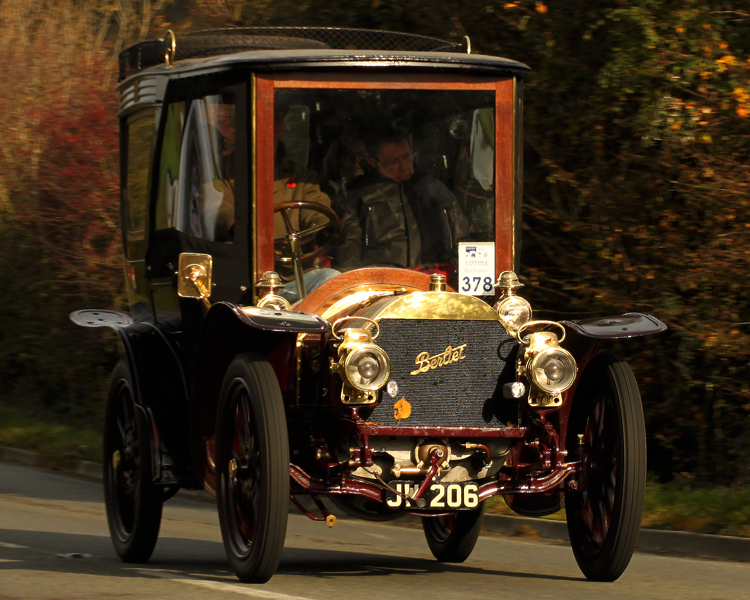
WHILE MOTOR CARS were yet in their infancy—the year 1899 to be precise—Monsieur BERLIET commenced manufacturing the now famous “BERLIET” with but 5 employees, in a workshop measuring but 150 square-metres.[3]
Ceaseless attention to detail and a personal attention which never flags has built up a business the products of which are second to none either in design, workmanship, or material.
Monsieur BERLIET now employs 1200 hands, and the Works cover an area of 40,000 square metres.
As certified by the Automobile Club of France, a Standard 22 H.-P. BERLIET with 4 passengers covered 62½ miles on 2 gallons of petrol at an average speed of 46 miles per hour.
See recent win at Brooklands.
Trial runs arranged with pleasure.
WILFRID FOULIS, LIMITED,
SUNBURY MEWS,
BELFORD ROAD,
EDINBURGH.
Scotsman, 2 June 1909
[3] Marius Berliet's factory was at Vénissieux near Lyon. The company became part of Citroen in 1967 and was subsumed within Renault Trucks in 1987. Image: 20 H.P. Berliot closed swing-seat tonneau (1903), by Krzysztof Marek Wlodarczyk, Wikimedia, Creative Commons, accessed 24.6.21.
*****
COOK or cook-housekeeper (experienced), abstainer, wants situation; season or shooting, or permanent in quiet place. C., c/o Clark, 65 Hope Street Lane, Edinburgh.
Scotsman, 5 June 1909
*****

ADULTERATED MILK AT LEITH.—Sheriff Orr, presiding at Edinburgh Sheriff Court yesterday, disposed of two cases in which Leith dairymen were charged with supplying milk below the recognised standard.
Alexander Barclay, who carries on business as a dairyman at Davidson’s Mains, and who had a contract with Robert Crowe, 29 Trinity Road, Leith, appeared in connection with a charge of having supplied Crowe with a quantity of sweet milk which was found to have been mixed with water to the extent of at least 10 per cent. In the course of the evidence, Mr Thomas Bishop, Leith Sanitary Inspector, stated that a sample of the milk sold by the respondent had been sent to the analyst, and found to be mixed to the extent of at least 10 per cent.
Witness asked the accused for an explanation, as he was of opinion that the milk was not the genuine product of the cow. Along with other officials witness visited the accused’s byre, and took a sample; the milk on this occasion being returned as genuine. The charge was found proved, and a fine of £5 imposed.
Proof was also led in a prosecution by the Leith authorities against Andrew Stenhouse, dairyman, Cumberland Street Lane, Edinburgh who was accused of having, through a servant, sold at 14 Craighall Crescent, Leith, a quantity of milk which had been mixed with at least 18 per cent of water. A fine of £3 was imposed.
Scotsman, 8 June 1909
[4] Image: Wikimedia Commons, accessed 24.7.21.
*****
DIVORCE CASES
(Before Lord Mackenzie)
Proof was led in an action of divorce brought by Mary Jane Goulding (sometime known as Goldie) or Barron, residing at 6 Union Street, Edinburgh, against her husband, Charles Barron, scavenger,[5] residing at 7 Church Lane, Edinburgh. Decree of divorce was pronounced.
Scotsman, 14 June 1909
[5] Scavengers was a term used for dustmen, or waste collection personnel today.
*****
THE BUDGET PROTEST LEAGUE.—During last week the open-air programme of meetings of the Budget Protest League was energetically continued.
Mr Wells had two meetings in Perth and meetings in Gilmerton, Gorebridge, and Rosewell. Mr George Clark had a good series of meetings in Dunfermline and Inverkeithing.
Mr Shaw visited West Perthshire, holding meetings at Dunblane, Doune, Callander, Blackford, and Auchterarder.
Mr William Templeton and Mr Henry Gray conducted a series of meetings in Edinburgh, holding evening meetings at Easter Road, Bread Street, foot of the Canongate, Nottingham Place, and Tollcross.
In addition, they held dinner-hour meetings at Leith, Duddingston, Coltbridge, and Fountainbridge.
The only interruptions that were met with were from the Socialist class.
Scotsman, 13 September 1909
*****
CROALL & CROALL,
COACHMAKERS TO THE KING,
AND MOTOR BODY BUILDERS,
YORK LANE, EDINBURGH, AND KELSO,
WOULD AGAIN DRAW SPECIAL ATTENTION to the EXCELLENCE of their MOTOR CARRIAGE WORK, which in ARTISTIC DESIGN, LUXURIOUS COMFORT, and SUPERB FINISH, is SECOND to NONE in this COUNTRY, and seldom Equalled.
The reason their BODIES, whilst being ABSOLUTELY STRONG, are so EXCEPTIONALLY LIGHT, and give such WONDERFULLY PERMANENT SATISFACTION, is on account of the IMMENSE STOCK of THOROUGHLY SEASONED TIMBER they have held tor years, thus ENTIRELY OBVIATING all SHRINKAGE.
YORK LANE has for the last Hundred Years held the PREMIER PLACE for its HIGH-CLASS HORSE CARRIAGES, and CROALL & CROALL are determined, by the Beautiful Designs and Leading Quality of their MOTOR BODIES, to more than retain that reputation to the full. They only make ONE CLASS of BODY—THE VERY BEST.
They invite Inspection of the Latest Parisian Deslgns al their Works, York Lane, Edinburgh, and Kelso, and shall be delighted to submit Specification for any Type of Body.
Scotsman, 16 October 1909
*****
EDINBURGH NEW WASH-HOUSES OPENED.—Yesterday afternoon Councillor Stewart, convener of the Plans and Works Committee of Edinburgh Town Council, formally opened the new public wash-houses at the corner of Greenside Place and Upper Greenside Lane in presence of a large gathering, the company including several members of the Town Council.[6]
The property was acquired under the Housing of the Working Classes Act of 1900, the original idea being to leave the building as it stood, and to instal washing appliances. Taking a wider view, the Plans and Works Committee decided to reconstruct the premises internally, in order to make them suitable for the purposes of washing.
On the ground floor is a simple arrangement of eighteen tubs, with a plentiful supply of hot and cold water and a drying chamber in the centre of the apartment. Washers have the alternative of open-air drying, there being excellent facilities for the drying of clothes on the northern slopes of the Calton Hill. Also provided are a large room for mangling and folding purposes, and a play-room for children while their mothers are at work.
Councillor Stewart expressed the hope that the premises would provide convenient appliances for the needs of the district meantime, and that they would aid in the solving of the problem of washing day in the working man’s house. The cost of erection applicable to the wash-houses would be about £650. Councillor Douglas said they felt this was a good beginning, and according to the use made of the premises they would be enlarged. Councillor Gibson remarked that they would try to bring the premises up to a better state of efficiency.
Scotsman, 26 October 1909
[6] Replaced by the Edinburgh Playhouse in 1929.
*****
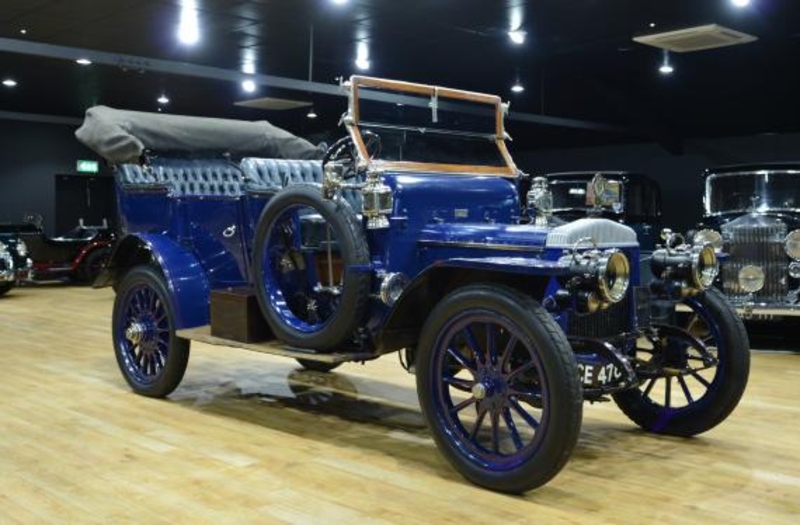
DAIMLER, 18.22. Handsome 5-Seated Car, with Hood; Folding Wind Screen, 5 Lamps, and Stepney Wheel; perfect order; fast; splendid hill-climber; trial run by appointment, Lawley, Broughton Street Lane.[7]
Scotsman, 27 November 1909
[7] Image: Classic Digest, accessed 24.7.21.
*****
BROWN MARE, rising 6, 15 hands; “Wild Kil Warling,” dam by “Benbattle;” fast; good mouth and manners. Apply Coachman, 5 Church Lane Square
Scotsman, 8 December 1909
*****
DEAN BANK INSTITUTION FOR GIRLS’ CHRISTMAS MEETING.—The annual Christmas meeting in connection with the Dean Bank Institution for Girls was held yesterday within the Home at Dean Bank Lane, Stockbridge, Edinburgh. Lord Provost W. S. Brown presided, and there was a good attendance of the friends of the institution.[8]
Hymns and songs were sung by the girls, a bright and happy-looking company, and the Lord Provost gave a short address, and took as the subject of his remarks the word “opportunity.” He counselled the young people to take full advantage of the opportunities that were given them in that institution as regards their education and their general conduct. It was a good thing, he said, for them all to take a little time at the end of a year to find out if they were any better than they had been at its beginning, and it was also good to look forward, and now was the time to make good resolutions for the future. Let them all try to improve themselves in the new year more than they had done in the one now drawing to a close.
The gifts, which included a sixpence to every girl, were then presented by Mrs Brown, wife of the Lord Provost, and votes of thanks were proposed by the Rev. George Steven, St Bemard’s United Free Church.
The report for the year, the seventy-sixth, stated that the objects of the institution were to provide shelter to young girls whose circumstances expose them to temptation and peril, to educate them religiously, morally, and industrially, and eventually to send them out into the world in some measure equipped to fight the battle of life, and able to maintain themselves in respectable domestic service.
The number of girls at present in the home was thirty-two. The girls attended the Flora Stevenson School, the headmaster of which reported:—“The girls from Dean Bank Institution continue to give every satisfaction to their teachers, while the excellent supervision of the Institution training is reflected in their manners both outside and inside of school.”
Scotsman, 29 December 1909
[8] See 'Edwardian News from the Mews, 27'.
